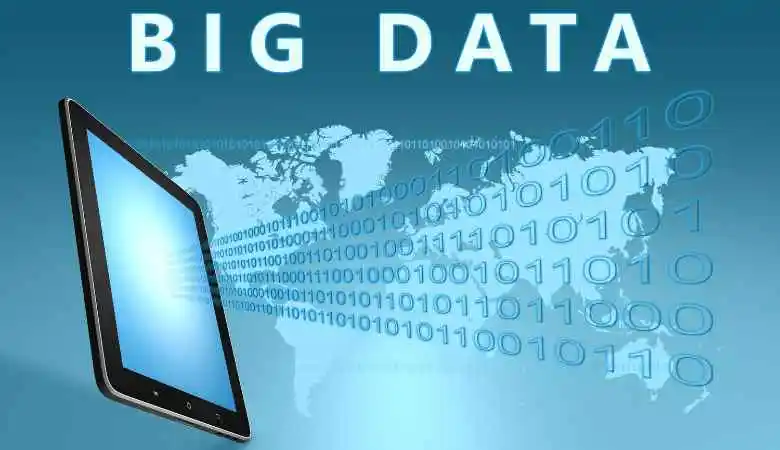In the information age, “Big Data” has emerged as a fundamental pillar in technology and business. But what is Big Data, and what is it for in the current landscape? In this post, we will explain the essence of Big Data, unravelling its definition and importance and how it is redefining how organizations make decisions and discover new opportunities. From analyzing trends to driving innovation, we’ll see how Big Data is not just a technical concept but a powerful tool transforming entire industries.
Understanding Big Data: What it is and What it is for
It is a term that describes the large amount of data (structured and unstructured) that abounds in a company daily. But the volume of data is one of many essential things. What is really valuable is how to manage that information to obtain guidelines that lead to better decision-making and strategic business actions.
The seven Vs of big data
Big data is based on the measurement of the following magnitudes:
- Volume: The amount of data generated and stored to process it and transform it into actions.
- Speed: The speed at which data is created, stored and processed in real time.
- Variety: Forms, types and sources in which data is recorded: text documents, emails, audio, videos or images on a mobile device, social network profiles, etc.
- Truthfulness: It is the quality of the data, that is, the reliability of the information received.
- Viability: Companies can generate effective use of the large volume of data they manage.
- Visualization: How the data is displayed to find hidden keys and patterns in the topic to be investigated.
- Worth: Data is transformed into information, becoming knowledge and an action or decision.
Uses of big data in companies
Big data makes it easier to undertake business activities, from extensive data analysis to customer experience. Some of them are reflected below:
- Product development: Large companies use big data to anticipate user demand. They generate predictive models for new products and services by classifying critical aspects of current and previous products.
- Predictive analysis: Big Data allows companies to analyze large volumes of historical data to predict future trends and behaviours. This is applied in areas such as anticipating product demand, predicting equipment failures, or identifying market opportunities.
- Supply chain optimization: By analyzing Big Data, companies can improve the efficiency of their supply chain. This includes inventory management, optimizing delivery routes, predicting product demand, and minimizing logistics costs.
- Improved decision-making: Big Data provides insights based on the analysis of large data sets, helping companies make more informed and data-driven decisions, thereby improving business strategy and daily operations.
- Risk management: Helps identify, analyze and mitigate potential risks in various aspects of the business. This may include financial, operational, reputational or compliance risks, allowing companies to develop proactive risk management strategies.
- Improved operational performance: Through real-time data analysis, companies can identify areas of inefficiency and improve their operational processes. This can result in increased productivity, cost reduction, and improved service or product quality.
- Competitive analysis: It allows companies to analyze information about competitors to better understand the market, identify industry trends, and develop data-driven competitive strategies.
- Market intelligence: Big Data analysis offers deep insights into market trends, consumer preferences, and industry dynamics, which helps strategically plan and identify new market opportunities.
- Human resources management: It is also used to analyze trends and patterns in personnel management, including recruitment, retention, performance evaluation, and career plan development, thus improving organizational talent management.
- Customer experience: A clear view of the customer experience is easier than ever. Big data allows you to collect information from website visits, social networks, call logs, and other data sources to refine the interaction experience and value. Reduce visitor abandonment rates and proactively manage incidents. All with a single objective: To obtain a more excellent clientele.
- Compliance and fraud: Compliance requirements and security contexts are constantly evolving. Big data makes it easier to identify data patterns that may lead to fraud while bringing together large volumes of data to streamline regulatory reporting.
- Machine learning: Data is one of the causes of this process. Instead of being programmed, machines can learn thanks to the availability of big data to generate machine learning models.
- Driving innovation: It can help innovate in the company by analyzing the interdependencies between institutions, processes, entities, and human beings. And later by determining novel ways to use said information. The possibilities are limitless: improving financial decisions and planning considerations, implementing dynamic pricing, analyzing trends and customer desires to develop new services and products, etc.
To use big data, companies need new tools and technologies to manage large amounts of data to get the maximum potential out of their data. That is why, today, there are a multitude of big data tools that companies can use to maximize their returns.
Where is the data used in big data obtained from?
Information can be obtained from different sources:
- Internet: through browser cookies, companies can find out the behaviour of their visitors to show advertisements according to their tastes, the hours of most excellent consumption, and the ways to access a particular page…
- Social networks: Much information is shared on different social networks: what topics are most relevant to users, their favourite brands, how they interact, etc. Combining all this data can provide a detailed vision of how to carry out specific marketing strategies.
Generated by the company is the information that a company can create and control itself. An example would be loyalty cards offering exclusive offers and services to customers and companies that pattern their consumption habits to anticipate their needs. Or credit cards that make consumption patterns known to financial institutions and thus offer specific services to their holders.
Big Data represents a revolution in the management and analysis of enormous volumes of data. Its application ranges from improving business decisions to promoting scientific advances, including optimizing marketing strategies and developing new technologies. By enabling detailed, real-time analysis, Big Data is vital for making informed decisions, identifying trends and patterns, and solving complex problems in various sectors.




